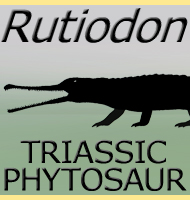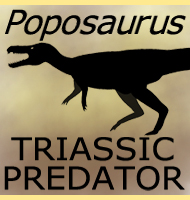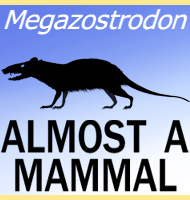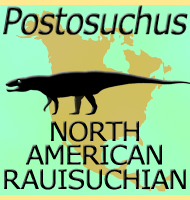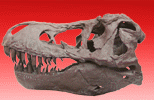


Paleorhinus
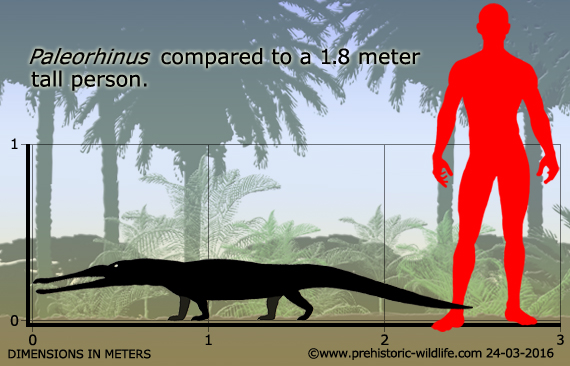
Name:
Paleorhinus
(Old nose).
Phonetic: Pay-le-o-rhy-nus.
Named By: S. W. Williston - 1904.
Synonyms: Francosuchus angustifrons,
Paleorhinus parvus.
Classification: Chordata, Reptilia, Crurotarsi,
Phytosauria.
Species: P. bransoni
(type), P. angustifrons, P. cf. arenaceus.
Diet: Carnivore/Piscivore.
Size: Roughly about 2.5 meters long.
Known locations: Germany - Hassberge Formation.
Poland -Drawno Beds Formation. USA, Arizona - Chinle
Formation, Texas - Colorado City Formation, Tecovas Formation,
and Wyoming - Popo Agie Formation.
Time period: Carnian of the Triassic.
Fossil representation: Numerous individuals,
though often of partial remains.
Paleorhinus
has been one of the key phytosaur
genera for well over a hundred years
now, however many of the species once assigned to the genus have
now been re-assigned to other genera. At the time of writing the only
recognised species of Paleorhinus are the type
species P. bransoni
from the USA, and P. angustifrons and P.
cf. arenaceus from
Germany and Poland respectively.
Like
all phytosaurs, Paleorhinus was not related to
crocodiles, yet
would have been very much like a modern crocodile in overall appearance
and ecological niche. Though Paleorhinus would
have rested on land,
most hunting would have been done in the water.
Further reading
- Notice of some new reptiles from the Upper Trias of Wyoming. -
Journal of Geology 12:688-697. - S. W. Williston - 1904.
- Weitere Parasuchier und Labyrinthodonten aus dem Blasensandstein
des mittleren Keuper von Ebrach [Further parasuchians and
labyrinthodonts from the Blasensandstein of the middle Keuper of
Ebrach]. - Pal�ontographica Abteilung A 83:61-98. - O.
Kuhn - 1936.
- A review of the early Late Triassic Krasiej�w biotafrom Silesia,
Poland. - Palaeontologia Polonica 64 (1): 3–27. -
J. Dzik & T. Sulej - 2007.
- Francosuchus' trauthi is
not Paleorhinus: Implications for Late
Triassic vertebrate biostratigraphy. - Journal of Vertebrate
Paleontology 33 (4): 858–864. - R. J. Butler -
2013.
Random favourites
 |
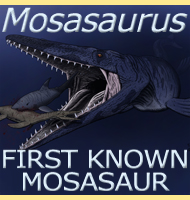 |
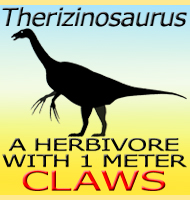 |
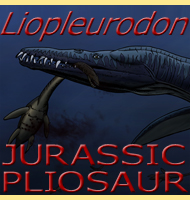 |
